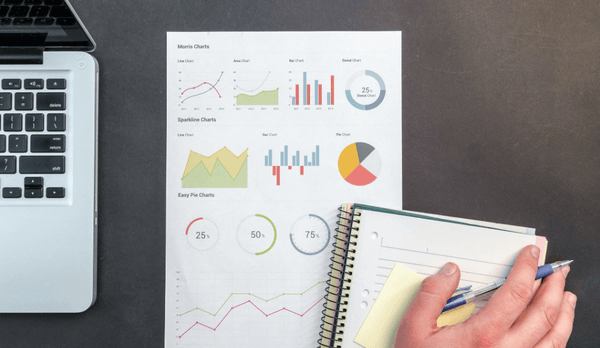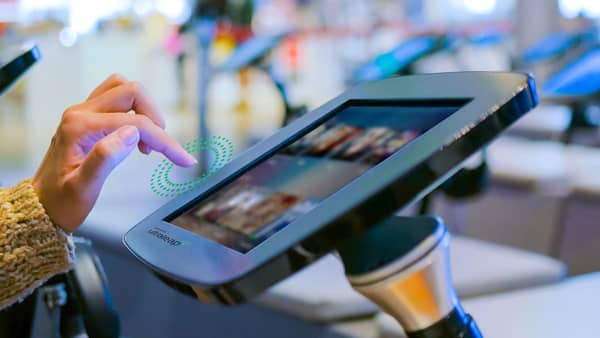
How Data Technology Is Improving Businesses
July 23, 2020
What Is Air Button Technology?
August 19, 2020The pandemic is forcing schools around the world to reimagine how to educate. These changes are happening in real-time to meet the demands of today. This is not typical for the educational realm. Educational organizations, especially public schools, are complex systems that typically require long study times and years of data analysis before the implementation of anything new.
But the COVID-19 pandemic doesn’t allow for that sort of window. Instead, administrators at all levels must now decide how to move forward with sweeping changes to meet the needs of today. This often means turning to radical technologies and strategies rarely or never used before within the educational system.
Current Technologies Being Used

Photo by Julia M Cameron from Pexels
Multiple technologies are now being leveraged to engage students who are learning from home because of the pandemic. This includes curriculum and professional development resources to support teachers and parents as they help students transition to their new learning environment, as well as platforms like Zoom, Skype, and Google Hangouts that allow students to interact with their teachers and classmates.
But it also includes lesser-known technologies and platforms to assist with crafting the best learning environment for the moment, that provide the engagement needed to motivate students to learn outside the traditional classroom setting. This includes
- MMOs, or massively multiplayer online games like the Age of Learning, that create a virtual world with thousands of activities to improve reading comprehension in early learners.
- Immersive video and computer simulations like those used on MidSchoolMath, a learning platform for math students in grades 5 through 8. This platform helps middle school students engage with core curriculum principles, and was developed with support from the US Department of Education and the National Science Foundation.
- Virtual Field Trips, using existing webcams to locations like the Monterey Bay Aquarium, the San Diego Zoo, and Yellowstone National Park. Some of these sites have updated their webpages to include additional information for teachers.

Photo by Lukas Kloeppel from Pexels
The Unexpected Side Effect of Tech-Based Distance Learning
While one might assume online learning will lead to a one-size-fits-all curriculum, the opposite may be true. Multiple states have issued directives that encourage educators to prioritize “flexible goals and structures for learning” while focusing on student engagement and encouragement, rather than teacher-centered instruction based upon delivering information and student memorization.
This shift leads away from longstanding curriculum practices where educators are required to focus on a set range of knowledge needed to pass specific standardized tests. Instead, teachers look to equitable learning techniques to leverage each student’s individual interests and skills to build a deeper understanding of the subject matter.
One of the primary complaints of both students and teachers within traditional learning settings has been the lack of one-on-one time available to deal with questions and issues with progress and mastery. Yet because many remote curriculums allow for both synchronous lessons where everyone is together as well as asynchronous plans where students are learning apart, teachers may find they have more pockets of time available for students who need the most support.
What Are the Security Ramifications of More Technology?
Even before the transition to massive online learning, data attacks on learning institutions were not unknown. In fact, a 2019 data breach at Georgia Tech resulting from unauthorized access to web applications led to the compromisation of personal information of over 1.3 million users, including students, faculty, and staff.
With each additional technology used, more data is created. And not just any data: data attached to the teaching process and the progress of each student within the system is specific and sensitive. This kind of personal information must be transmitted and stored securely and accurately.
An increase in technology use requires an exponential increase in technology security. Organizations should have a plan for how they will properly store, transfer, secure, and monitor all data and personal information. Data must be retained properly to protect the precision of grades and to provide an accurate analysis of user experience.
Future Technologies That Will Be Used
As students return to school settings, we may see an increased acceleration in the adoption of new ways to educate. Teachers and administrators who recognized the benefits of technology adoption will no longer be limited by the constraints of decentralized learning as they were during the pandemic. Educators will likely fashion new curriculums around platforms used for distance learning during the Covid-19 crises, enhanced by other technologies like:
- Augmented reality. Augmented reality can allow beginning French students to see the equivalent French word over every item in a classroom simply by blinking. Or, by using an app like Catchy Words, teaching letters and spelling can become interactive with life-like, real-world moving words and letters. Both will be or are possible using AR.
- Virtual reality. VR technology allows students to engage with a simulated environment in a fully immersive way. Environmental students could visit and walk through Chernobyl or Fukushima before, during, and after the plants’ respective issues using VR technology. This kind of learning will produce students who have been challenged like never before, who are engaged with learning, and who can use the technology of virtual worlds to meet the challenges of their own world in new ways

Photo by mentatdgt from Pexels
- Artificial Intelligence. Artificial Intelligence is already being used by some educators. But its use will continue to expand. AI will help free up the most valuable resource in the classroom–the teacher–by automating certain tasks, including paperwork and the grading of quizzes. AI can also be used to identify any gaps in a student’s understanding, and to personalize a learning experience to remedy this gap.
How Will This Shape the Future of Education?
All sectors of the economy are moving toward using more technology. It’s important for students to keep up with these changes, and be comfortable with them. Virtual reality and AI will be regular tools for current students who follow paths to jobs as surgeons, engineers, machinists, even VR ethicists. Technology is fostering a spirit of independence and accountability within our classrooms, moving the student closer to the center of their own learning experience and the teacher to a mentoring relationship.
Main Photo by Julia M Cameron from Pexels

